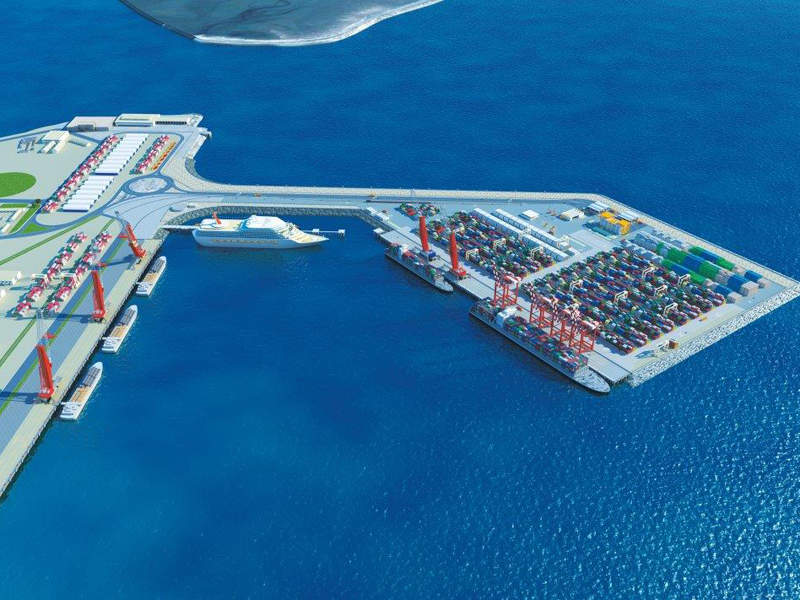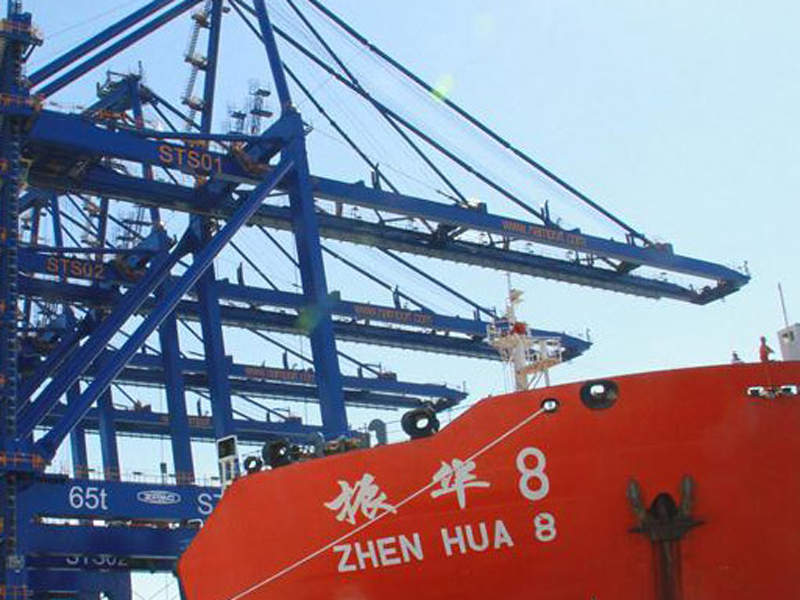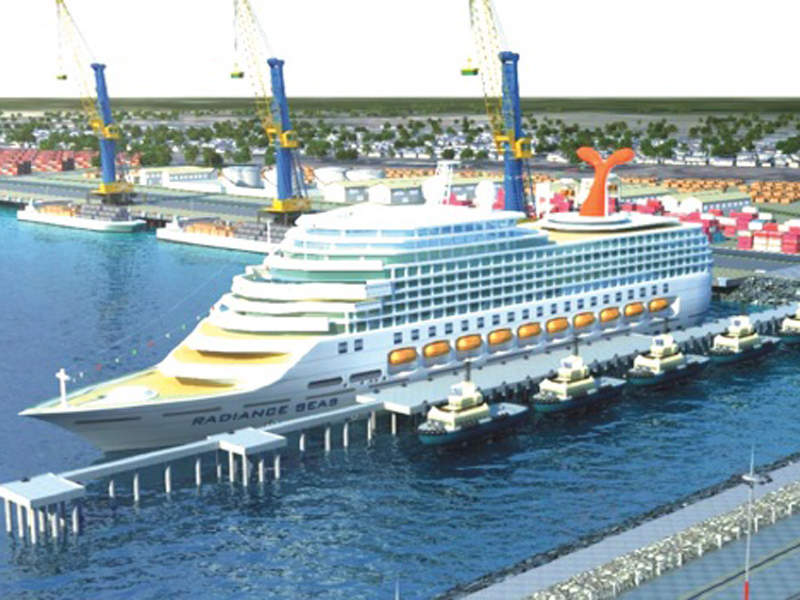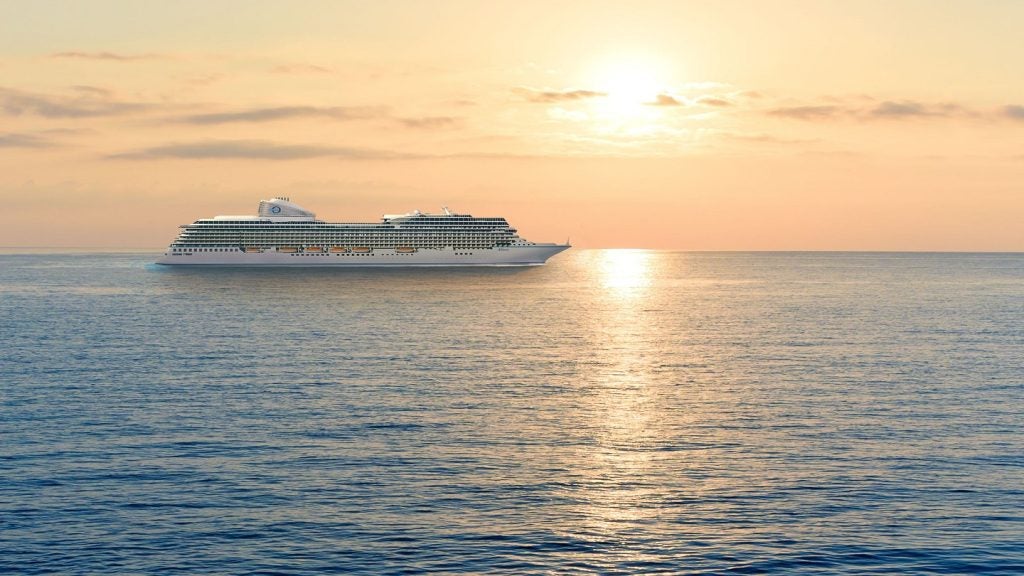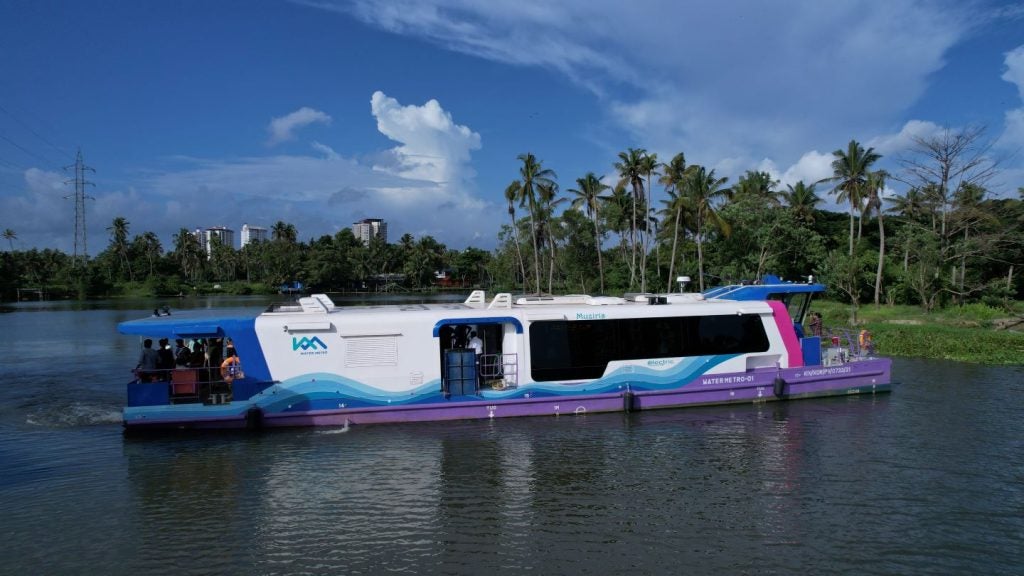Port of Walvis Bay, the biggest commercial port in Namibia, is operated by Namibian Port Authority (Namport).
The port offers direct access to main shipping routes serving international trade.
Namport constructed a new container terminal on reclaimed land to increase the handling capacity of the Port of Walvis Bay from 350,000 twenty-foot equivalent units (TEU) to 750,000 TEU a year.
Groundbreaking of the new container terminal was held in May 2014. Construction began in mid-2014 and was completed in August 2019.
Background of the container terminal project
Before expansion, Walvis Bay port handled approximately 3,000 vessels and five million tonnes of cargo a year. It manages container imports, exports, transhipments, and transportation of bulk and break-bulk cargos of various commodities.
The port reached its maximum handling capacity and has been witnessing steady growth in freight traffic, which has resulted in a proposal to develop the new container terminal or South Port Development to meet freight demand in the future.
The Port of Walvis Bay has also been identified as a regional hub in the SADC Regional Infrastructure Development Master Plan (RIDMP).
As a result of the increasing traffic, Namport initiated the expansion to establish Walvis Bay as the logistics hub of choice for the SADC while reducing dependency on the eastern ports in South Africa, Mozambique, and Tanzania.
Details of the new container terminal
Built on 40ha of newly reclaimed land, the terminal has increased the container handling capacity, as well as bulk and break-bulk, handling capacities of the port. The existing container terminal will be transformed into a multi-purpose terminal.
The reclaimed land is made up of the sand that was obtained from dredging or deepening the port. It houses a modern container terminal, which includes quay walls, paved areas, buildings, roads, railway lines, ship-to-shore quay cranes, rubber-tired gantry and cranes.
The project added a new 600m quay wall to the existing 1,800m to minimise disruptions during operations.
The new terminal has three new berths, designated 9, 10 and 11. The two 600m-long berths are able to accommodate container vessels of 8,000 TEU.
Construction
A 10,000m³ trailing suction hopper dredger named Jun Hai II provided assistance for the dredging works of the project.
More than 2,000 people worked for more than five million man-hours without a recorded incident.
Four new ship-to-shore cranes were installed at the terminal to load and offload containers from vessels. The cranes offered higher lifting capacity than the existing ship-to-shore (STS) cranes at the port.
Financing
The African Development Bank co-financed the NAD4bn ($344.84m) project along with Namport. It funded 87.6% of the total project cost, while Namport contributed 12.4% of the investment.
The African Development Bank granted NAD3bn ($253m) towards the project’s financing in November 2013.
Contractors involved with the new container terminal at Walvis Bay port
Namport placed an engineering, procurement, and construction (EPC) contract with China Harbour Engineering Company for the new container terminal project in November 2013.
The four ship-to-shore (STS) cranes for the terminal were provided by Zhenhua Port Machinery Company.
CCCC Guangzhou Dredging provided the trailing suction hopper dredger to conduct dredging works at the port.

